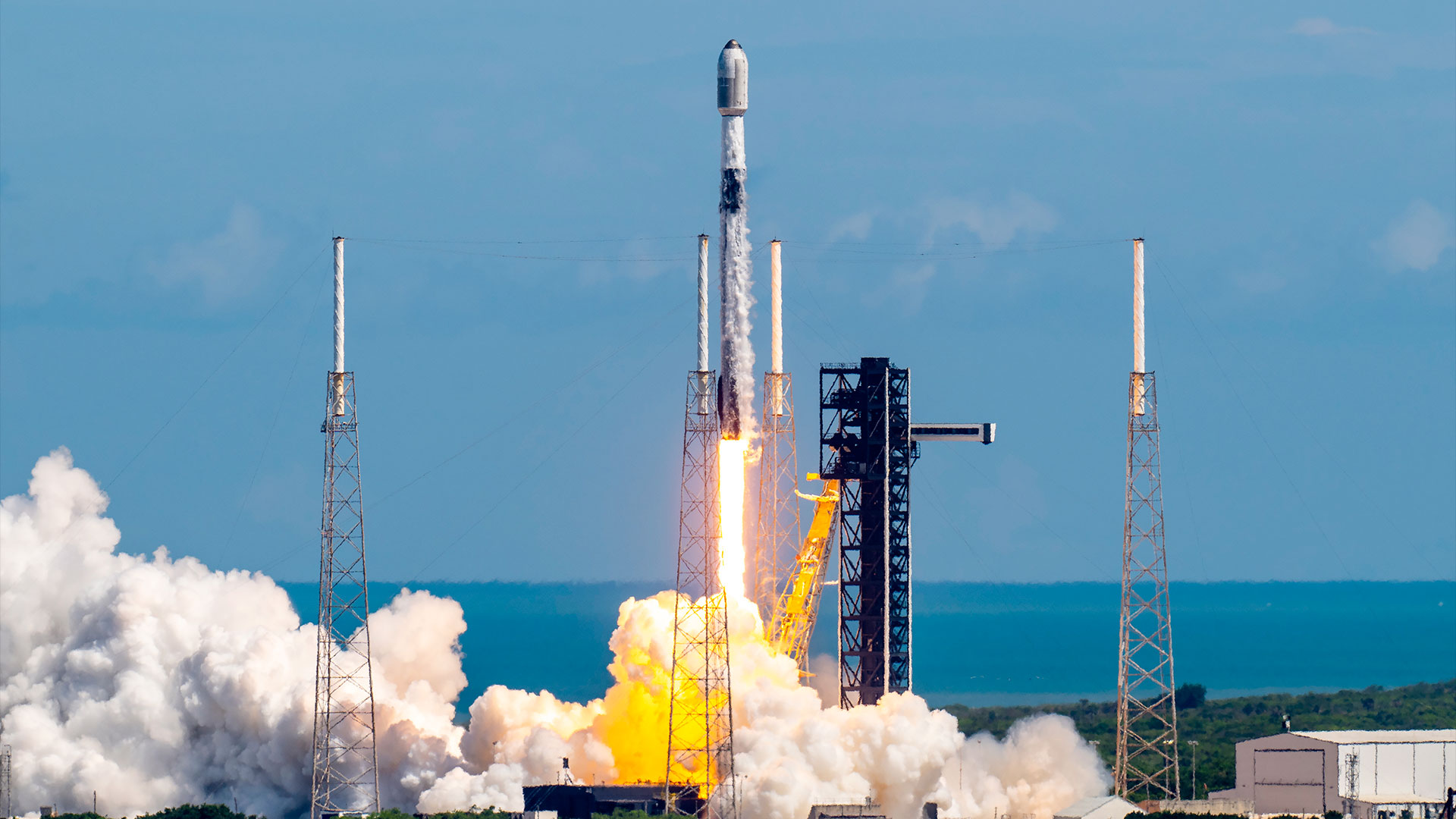
SpaceX is getting ready to let Starhopper off its leash.
Starhopper, a prototype for the company's future Mars-colonizing Starship vehicle, has conducted two brief test hops to date. Both occurred in early April at SpaceX's Boca Chica test site near Brownsville, Texas, and both employed a tether, which kept Starhopper very close to the ground (for safety's sake).
SpaceX had apparently been holding off on taking the next big testing step — removing the tether and letting Starhopper fly freely — until it could fix an issue with the vehicle's powerful, next-generation Raptor engine. But that problem seems to be solved, company founder and CEO Elon Musk announced via Twitter over the weekend.
Related: SpaceX's 'Starship' Prototype Coming Together in Florida (Photos)
Exciting progress in Boca! Hopper almost ready to hover. Based on tonight’s test, looks like 600 Hz Raptor vibration problem is fixed. pic.twitter.com/9bLWOHG0sVJuly 7, 2019
"Exciting progress in Boca! Hopper almost ready to hover. Based on tonight’s test, looks like 600 Hz Raptor vibration problem is fixed," Musk wrote early Sunday morning (July 7). (He has previously described the coming hover flights as untethered.)
In another tweet that afternoon, the billionaire entrepreneur implied that SpaceX aims to conduct the first untethered Starhopper flight in the next week or so.
"Will do Starship presentation a few weeks after Hopper hovers, so prob late July. If that timing works, free LJ chips for all present!" Musk wrote, responding to a Twitter follower asking for a Starship update.
Breaking space news, the latest updates on rocket launches, skywatching events and more!
Will do Starship presentation a few weeks after Hopper hovers, so prob late July. If that timing works, free LJ chips for all present!July 7, 2019
The current iteration of Starhopper features just a single Raptor engine. A future, higher-flying version of the test vehicle will have three Raptors, and the operational Starship will boast six.
The 100-passenger Starship will launch atop a huge rocket called the Super Heavy, which will be powered by 31 Raptor engines. Both Starship and the Super Heavy will be reusable.
SpaceX sees the Starship-Super Heavy duo as enabling a variety of ambitious exploration feats, in particular the settlement of the moon and Mars. The company eventually plans to phase out its other spaceflight vehicles — the Falcon 9 and Falcon Heavy rockets, plus the crewed and cargo versions of the Dragon capsule — and let Starship and Super Heavy carry the entire load.
Starship Mk 1 & HopperJuly 8, 2019
SpaceX has one Starship-Super Heavy mission officially on its books — a round-the-moon trip paid for by Japanese billionaire Yusaku Maezawa, who will take a handful of artists with him. That epic flight is targeted for 2023.
But Starship may actually fly sooner than that: SpaceX is talking to several telecommunications companies about a potential 2021 satellite launch.
South Texas isn't the only location with Starhopper action. SpaceX is also building a Starship prototype on Florida's Space Coast, reasoning that a little intra-company competition will improve the vehicle's design.
- SpaceX's Starship and Super Heavy Mars Rocket in Pictures
- See the Evolution of SpaceX's Rockets in Pictures
- SpaceX's Raptor Engine Hits Power Level for Starship Launches
Mike Wall's book about the search for alien life, "Out There" (Grand Central Publishing, 2018; illustrated by Karl Tate), is out now. Follow him on Twitter @michaeldwall. Follow us on Twitter @Spacedotcom or Facebook.
Join our Space Forums to keep talking space on the latest missions, night sky and more! And if you have a news tip, correction or comment, let us know at: community@space.com.

Michael Wall is a Senior Space Writer with Space.com and joined the team in 2010. He primarily covers exoplanets, spaceflight and military space, but has been known to dabble in the space art beat. His book about the search for alien life, "Out There," was published on Nov. 13, 2018. Before becoming a science writer, Michael worked as a herpetologist and wildlife biologist. He has a Ph.D. in evolutionary biology from the University of Sydney, Australia, a bachelor's degree from the University of Arizona, and a graduate certificate in science writing from the University of California, Santa Cruz. To find out what his latest project is, you can follow Michael on Twitter.
